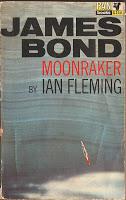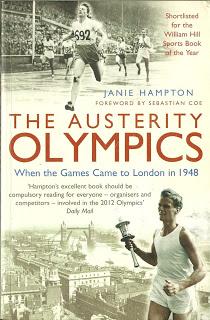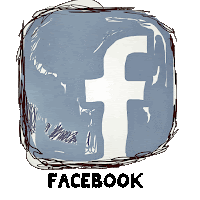Welcome to The Daily Constitutional London Library – my London reading recommendations for these days of self-isolation and social distancing.
If you are unable to come & visit us in London for the next little while, or if you're stuck at home, I'm providing a few suggestions for great London-themed & London-based books
In the series I'll be drawing in literary fiction, popular fiction, graphic novels and non-fiction to create a reading list as disparate and inspiring as London itself.
Each one features at least one London location – and I'll also share a map to some of the locations featured…

No. 1. Moonraker by Ian Fleming (1955)
The jet set nature of James Bond’s remit means that those looking for London settings in the novels of Ian Fleming must make do with fleeting glimpses of St James’s (his club), Regent’s Park (his “office”) and King’s Road (his apartment) before he sets off for adventures in climes exotic.
The exception is Moonraker: the third Bond novel is set entirely in England.
In pursuit of Hugo Drax, a megalomaniac would-be dictator, arms manufacturer and (worst of all in M’s book) card cheat, Bond gambles, drinks and takes amphetamines in St James’s, meets with Assistant Commissioner Vallance at Scotland Yard and prangs his vintage Bentley in the prosaic surroundings of the capital's South Circular ring road. He later road tests his new motor, a four-and-a-half liter 1953 Bentley Mark VI on Birdcage Walk SW1.
Drax remains one of Fleming’s best villains; Bond is at his most bullet-proof in this tale, bouncing back from the events of the previous assignment (Live and Let Die); and the glimpses behind the mask of M bring one of popular fiction’s most enigmatic supporting characters leaping from the page. But it is perhaps the behind-the-scenes look at Pall Mall’s club land that holds the most delicious London detail – Fleming makes for a fine tour guide.
(Fleming often functioned thus – his descriptions of air travel throughout the books seem stultifying to the modern reader, but when they were published they provided an astonishing glimpse of the good life to the post-war and thoroughly earthbound thriller reader.)
It also features my favorite line in all of the James Bond canon – books and movies included. After a particularly heavy night, Bond groans: "Champagne and benzedrine. Never again!"
Birdcage Walk…
… watch out for speeding Bentleys.
The road is named for the royal menagerie and aviary which stood here at the time of King James I.
Blades Club…
… is a fictional club but stands roughly at the spot where the real life Pratt's Club can be found in Park Place. Bond is NOT a member, but is here as the guest of M. It is believed to be an amalgam of White's, Boodles, The Portland Club & Brooks's. At one time or another Ian Fleming was a member at all four clubs.
No.2. The Austerity Olympics: When the Games Came to London in 1948
By Janie Hampton
Janie Hampton’s wonderful book on the 1948 Olympics tells the tale of London’s second hosting of the Games.
For those of you stifling a yawn at this point, perhaps anticipating lists and times and heights and team sheets and medal tables, well think again. Hampton’s narrative is just that: a narrative, a tale well told, mercifully free from dry match facts and mere sports reporting.
 Instead, Hampton treats us to the stories of the people who made the Games: the posh rower who thought his official Olympic blazer to be of such poor quality that it must have been “cut with a spoon”; then the athlete who found her blazer so smart that she wore it to her sister’s wedding.
Instead, Hampton treats us to the stories of the people who made the Games: the posh rower who thought his official Olympic blazer to be of such poor quality that it must have been “cut with a spoon”; then the athlete who found her blazer so smart that she wore it to her sister’s wedding. There are tales of the American and Canadian teams sharing their ample rations with the deprived European teams – and of the French captain complaining strenuously about the British food!
Every corner was cut, every penny pinched. Teams were put up not in a swish Olympic Village, but in schools and army barracks. One official even expected the cycling competitors to be able to ride their own bikes to Herne Hill for the races!
The Dutchwoman Fanny Blankers-Koen remains the heroine of the ‘48 Games, winning four gold medals on the track. Despite the fact that she beat British girls into silver position to take three of those golds, the London crowds took her to their hearts. And her journey is here too – from Nazi occupied Holland to the Hunger Winter of ’44 to the winners’ podium at Wembley.
But it is the unsung heroes who make the story such a delight. The overall tale that emerges is humane and moving, nuanced and rich, truly Olympian. Left to a sports reporter, there’s every chance this book would have garnered as many gold medals as the British track and field competitors in 1948 – none at all. In the hands of Janie Hampton, it’s a story worthy of as many garlands as the great Fanny Blankers-Koen herself.
The Herne Hill Velodrome…
… where the cycling events took place in 1948 is still on the go! It opened back in 1891 and is one of the oldest cycling tracks in the world. During WWI Crystal Palace F.C played their home games here – having been turfed out of their own ground by The Admiralty who needed it for the war effort. And in the post-WWII period the London Welsh Rugby Club found a home here.
Keep In Touch…






